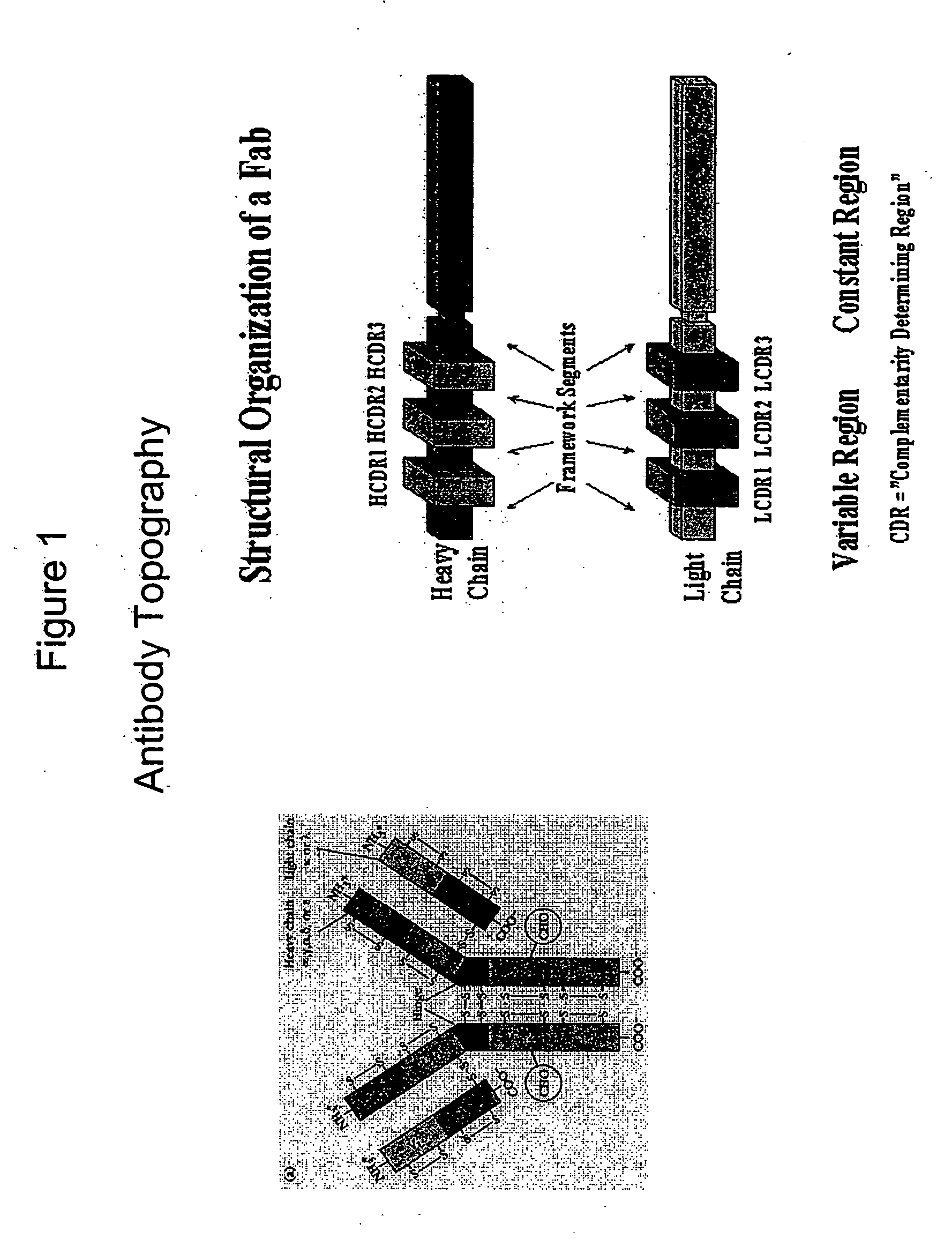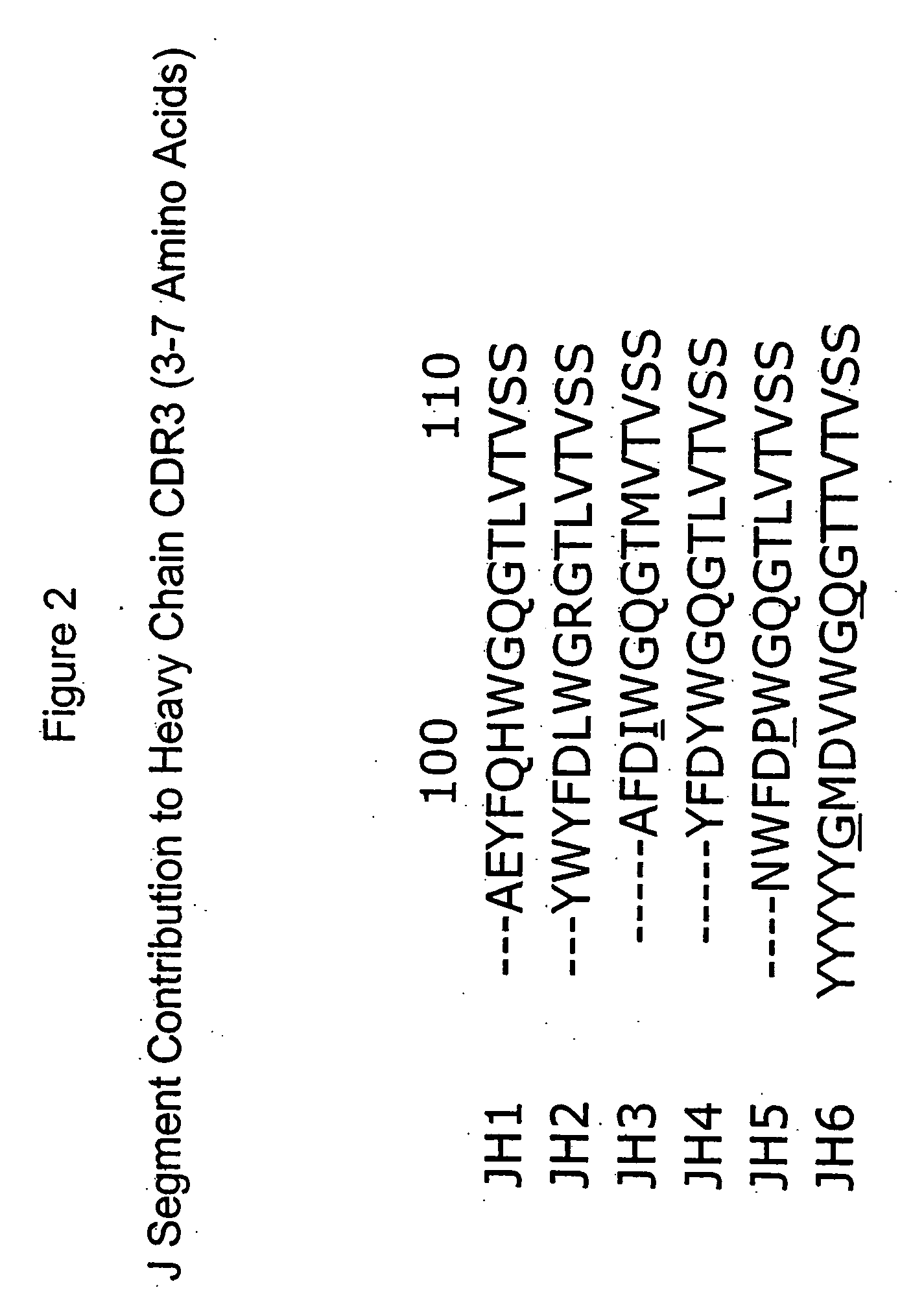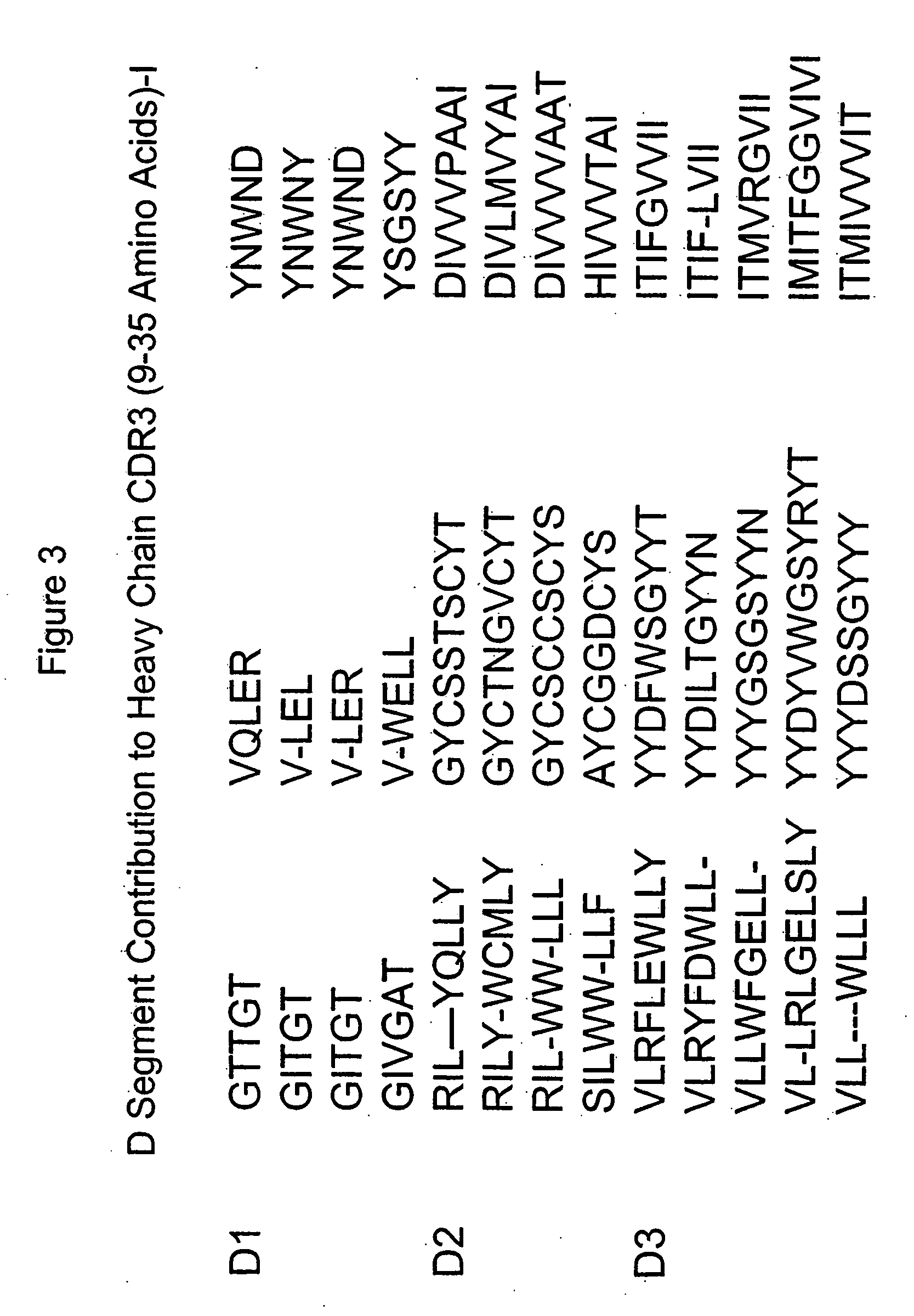Immunoglobulin-like variable chain binding polypeptides and methods of use
a technology of variable chain and immunoglobulin, which is applied in the field of immunoglobulin-like binding polypeptides, can solve the problems of reducing the death rate, debilitating side effects, and restricting the use of immunoglobulins as therapeutic entities,
- Summary
- Abstract
- Description
- Claims
- Application Information
AI Technical Summary
Benefits of technology
Problems solved by technology
Method used
Image
Examples
Embodiment Construction
[0015] The invention is directed to populations of immunoglobulin-like binding polypeptides that contain members exhibiting a wide range of binding specificities. The populations can be screened for specific binding activity to a predetermined ligand. Immunoglobulin-like binding polypeptides of the invention include VH-like, VL-like and FV-like binding polypeptides. FV-like binding polypeptides result from assembly of a VH-like and a VL-like binding polypeptide. These binding polypeptides as well as functional fragments exhibiting binding specificity to a ligand also are included as an immunoglobulin-like binding polypeptide of the invention. The immunoglobulin-like binding polypeptides of the invention mimic the structure of an authentic immunoglobulin polypeptide or binding fragment thereof. Therefore, the immunogloulin-like binding polypeptides of the invention exhibit beneficial characteristics of authentic immunoglobulins such as molecular stability and specific binding affinit...
PUM
| Property | Measurement | Unit |
|---|---|---|
| binding affinity | aaaaa | aaaaa |
| structure | aaaaa | aaaaa |
| molecular stability | aaaaa | aaaaa |
Abstract
Description
Claims
Application Information
 Login to View More
Login to View More - R&D
- Intellectual Property
- Life Sciences
- Materials
- Tech Scout
- Unparalleled Data Quality
- Higher Quality Content
- 60% Fewer Hallucinations
Browse by: Latest US Patents, China's latest patents, Technical Efficacy Thesaurus, Application Domain, Technology Topic, Popular Technical Reports.
© 2025 PatSnap. All rights reserved.Legal|Privacy policy|Modern Slavery Act Transparency Statement|Sitemap|About US| Contact US: help@patsnap.com



